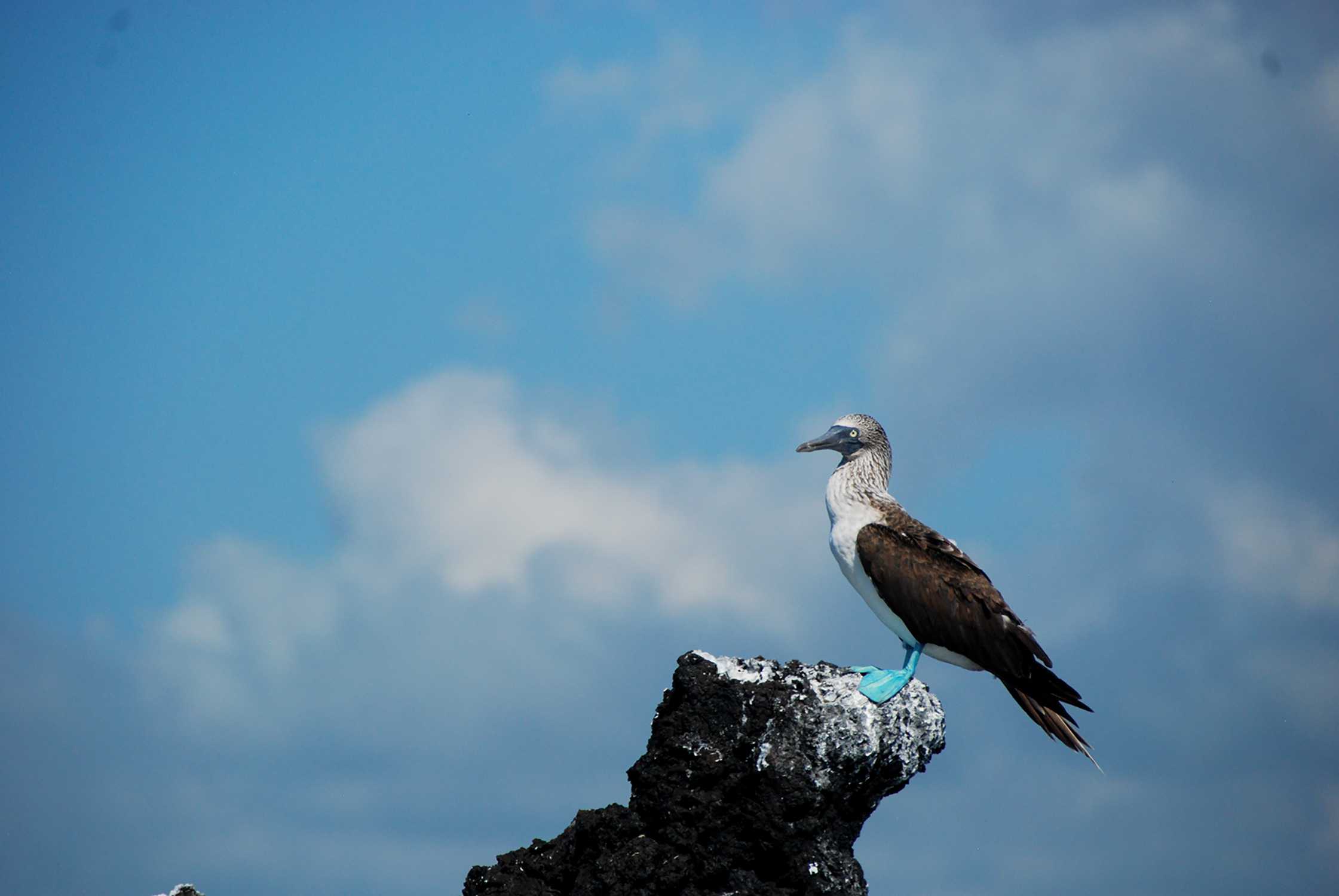Tranquil Travels: Exploring Darwin’s equatorial archipelago
When people talk about places being “serene” they usually mean that the place makes them feel relaxed, that the calm ebb and flow of ocean waves calms them, or that the fresh mountain air makes them feel at peace. But when I went to the Galápagos last winter, I experienced a whole new meaning of serenity.
In the Galápagos, not only was I at ease, but it felt like the surrounding life was as well. Most animals weren’t bothered by tourists and some even seemed to enjoy their presence.
In 1835, Charles Darwin gathered evidence in the Galápagos that he would later use to explain his theory of evolution in “The Origin of Species.” While he did not understand his findings’ significance at the time, he saw how different finches had adapted to their environment on each island.
Today, Galápagos National Park has become a popular site for tourists to see the incredible biodiversity of the islands.
In recent years the threat of climate change and overfishing has brought significant scientific and conservationist attention to the region. Environmentalists are eager to protect the islands because the Galápagos is one of the largest concentrations of endemic creatures on the planet. According to the Galápagos Conservancy, over 95% of land reptiles and mammals are found only in the islands.
By Land
One native animal is the giant tortoise, which looks like it should be walking among the dinosaurs. These stoic beasts seem so mythical that it feels out of place to see them simply lounging by the side of the road.
They much resemble a tank both in appearance and in spirit. Their coarse skin, coated with years of mud and dust, seems like it could withstand anything. Older tortoises, which can age up to 170 years, have visible scratches on their shells from trudging through fences and bushes.
While some roam free in the valleys of Santa Cruz and other islands, dozens are kept on the island of San Cristobal at a conservation center. Many species are extinct, and the conservation team aims to recreate the species, by breeding tortoises with the most similar features to the extinct species, until they have a group of tortoises that resembles the extinct species as closely as possible. They hope to have a few species back after about 40 years of breeding.
By Air
Blue Footed Boobies, with their distinctive bright blue feet, are another common species that inhabits the islands. They hunt in shallow waters, taking death-defying nosedives into the water to catch fish. I initially wondered how they could survive such a plunge, but the birds have air sacs in their skull to absorb the shock of the dive.
Unlike their blue-footed relatives, the Nazca booby nests in huge colonies across the Galápagos shoreline. These breeding grounds are home to hundreds or even thousands of birds and their offspring, the sheer scale of which left me in awe.
The Galápagos is home to some of the most diverse avian life on the planet, including different species of finches which formed the basis for Darwin’s theory of evolution.
Darwin observed the unique adaptations that finches developed to best survive on each island of the Galápagos.
By Sea
The waters around the Galápagos benefit from the fact that the islands lie at a crossroads between cold, nutrient-rich currents and warm, equatorial currents. That combine to create a perfect space for marine life forms to coexist.
I slowly swam along, inches away from magnificent parrotfish dazzling with purple and blue and huge schools of black and orange race fish. Sea turtles swim gracefully with delicate angelfish under the same waves as the elusive manta ray.
A more frequent sight was a less graceful creature: the marine iguana. These reptiles don’t look like they should be able to swim, but nonetheless they do, traversing the depths for minutes at a time to feed on undersea algae. But I most often saw them lounging on the rocks, piling on top of each other to keep warm, and sneezing .
However, the animal most emblematic of the islands is no doubt the Galápagos sea lion. They play in shallow water, roll on the sand, and lie around for most of the day. When I wandered up to them, they didn’t back away, instead embracing the attention. Visitors will find the fun-loving nature of these mammals charming and amazing, just as they will the enchanting aura of the Galápagos Islands.



